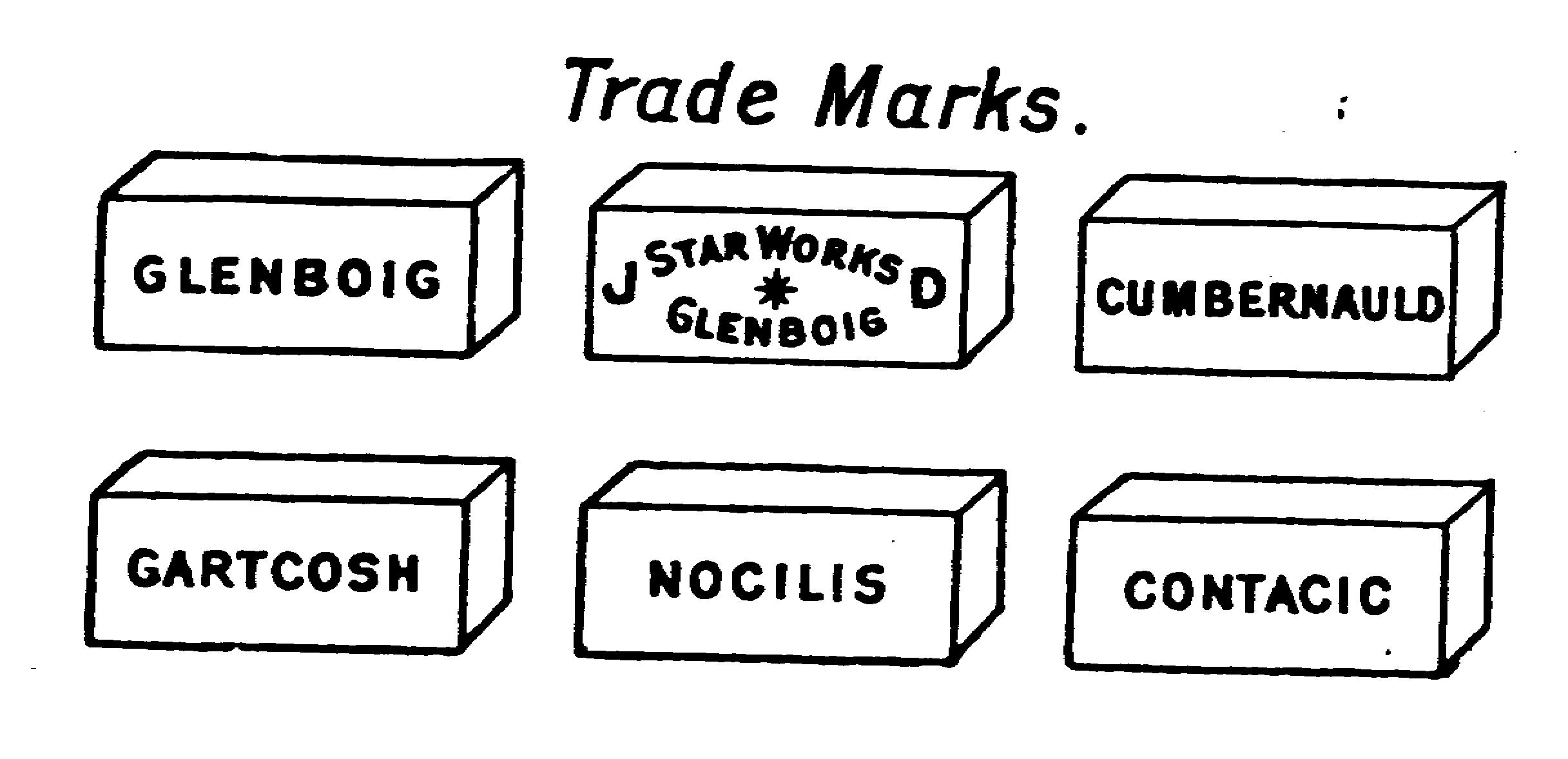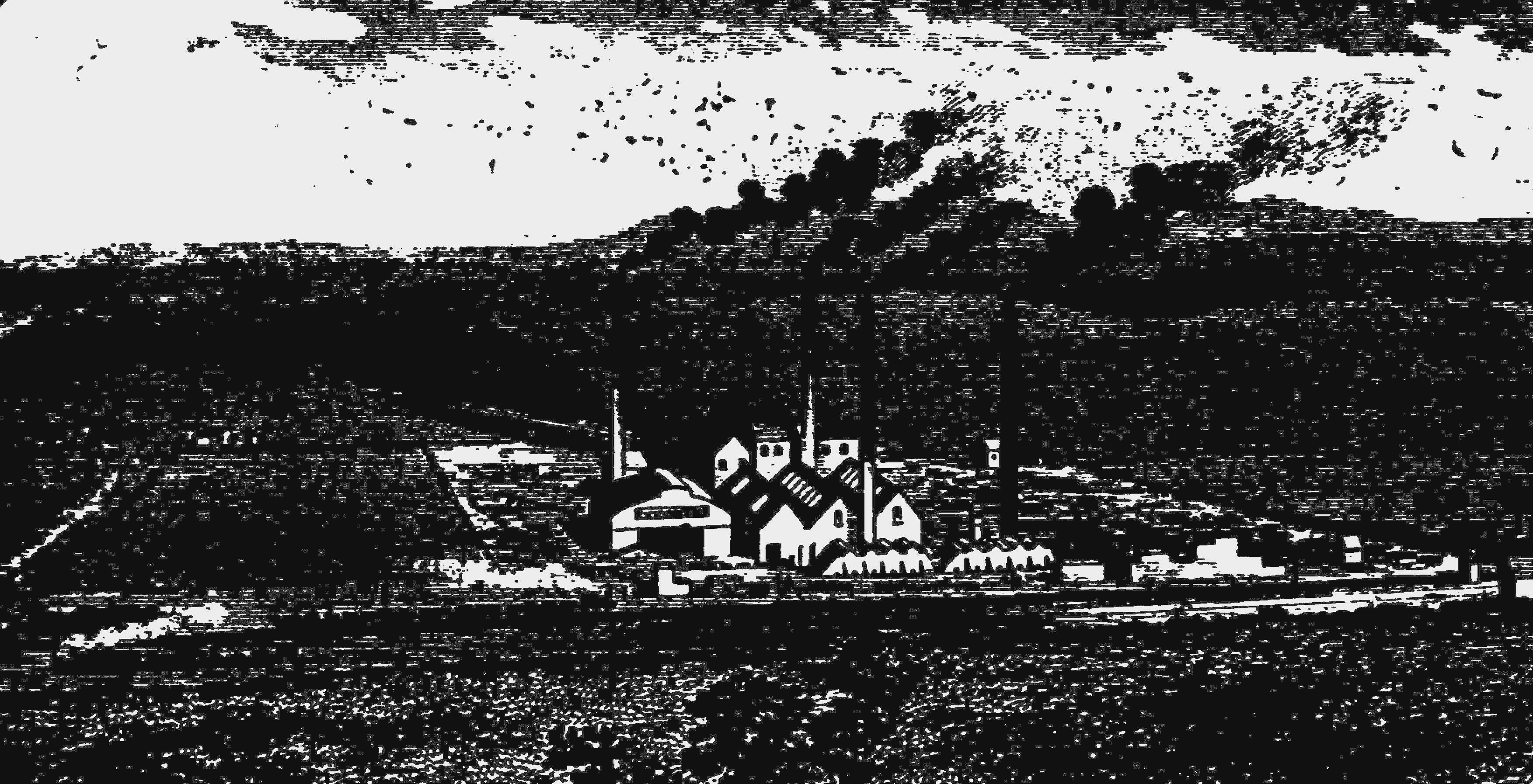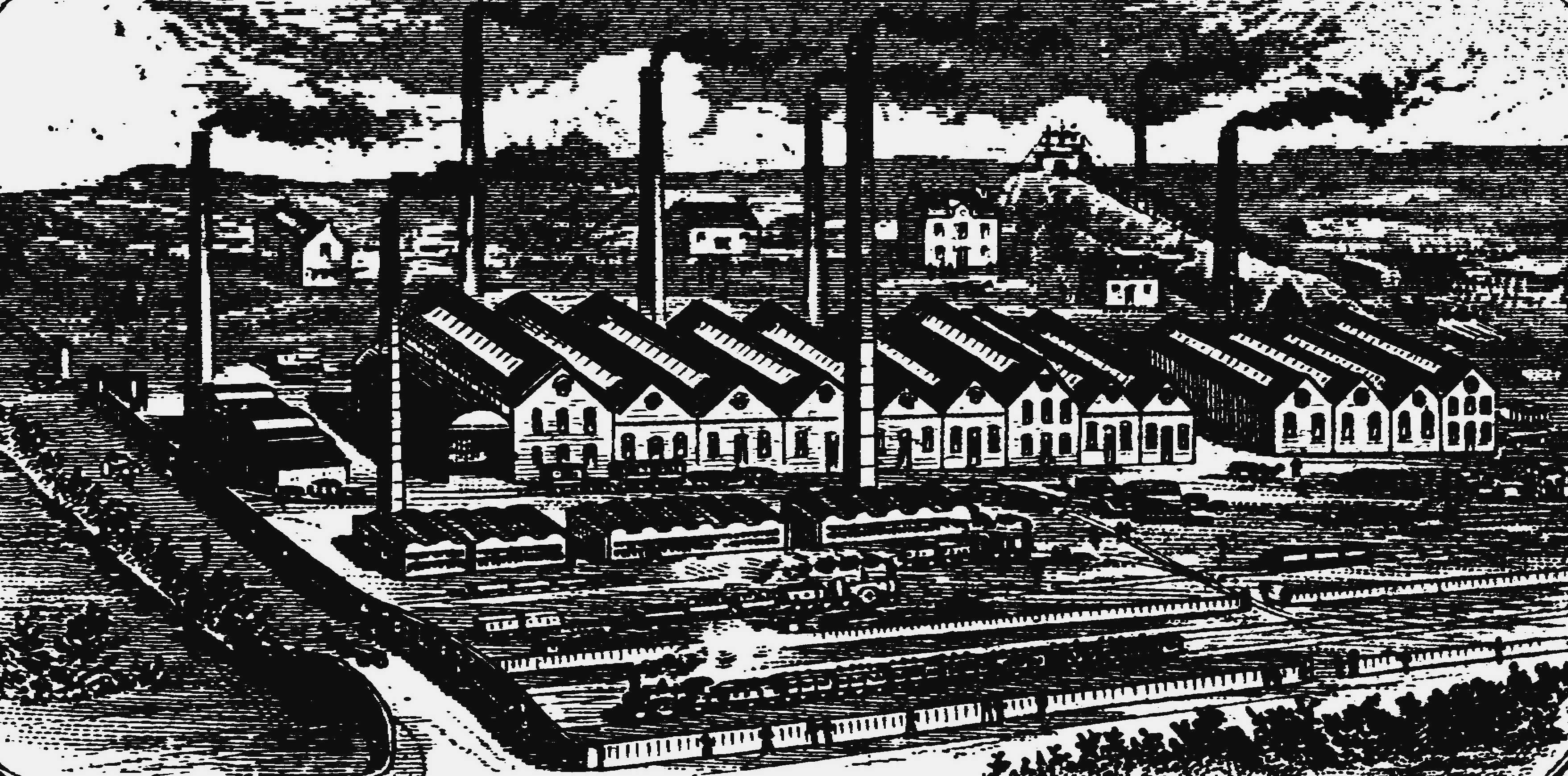
Glenboig Union Fire-Clay Company, Limited
THE GLENBOIG UNION FIRE-CLAY Co., Limited, Glenboig, Cumbernauld, and Gartcosh. Offices 4, West Regent Street, Glasgow.
In connection with the manufacture of fire-clay goods, the one great enterprise which, both in the magnitude of its connections and the unrivalled excellence of its productions, far surpasses all other concerns of its kind in the United Kingdom is the Glenboig Union Fire-Clay Company, Limited, whose extensive works, located at Glenboig, near Coatbridge, Cumbernauld, and Gartcosh, have long been regarded as the sources of an unlimited supply of material which plays a most conspicuous part in modern systems of sanitation as well as in the application of the arts and sciences to the processes of manufacture and commerce.

The annals of the Glenboig Union Fire-Clay Co., Limited, commence from the year 1836, when the works were first started. For several years the manufactures of the concern were comparatively small, but with every advancing year the total output increased, owing to the fact of its becoming known that the Glenboig goods were of a quality unrivalled for the resistance of high heats and changes of temperature, and were economical when compared with the lower priced goods which competed with them.

The first important extension of the works took place in 1860, when they became the property of Messrs. Thomson, McLean, & Co. That firm existed until 1865, when, on the retiral of one partner and the death of another, the works passed into the hands of the manager (Mr. James Dunnachie, the present managing director), who assumed two partners and formed the Glenboig Fire-Clay Company. In 1872 the Company as then constituted was dissolved, and the three partners separated ; one of them bought the old works, and continued to trade under the old designation (the Glenboig Fire-Clay Company). Mr. Dunnachie leased the unlet portion of the Glenboig clay field, consisting of six-sevenths of the whole, and erected the Star Works, Glenboig. The quality of the goods manufactured at these works was such that, in a very short time, they had the largest output of any fireclay works in the United Kingdom. In the year 1882 the two Glenboig Works were united in one under the designation of the Glenboig Union Fire-Clay Co., Limited, the vendors, who sold to the company works, leases, and goodwill, binding themselves not to start in the same line of business for 15 years from date of sale. By the unanimous wish of the Board of Management, and by express contract, Mr. James Dunnachie became managing director of the Union Company, so that the present management is the same as it has been since 1860.

The fire-bricks manufactured by the Company are unrivalled in excellence. No less an authority than Professor Abel, F.R.C., the chemist to the War Department, has shown in an analysis table of the different firebricks used at the Royal Arsenal, Woolwich, that the Glenboig specimen, by reason of its freedom from alkalis and its general refractoriness, was found on examination to be superior to all others ; and there is abundant evidence both scientific, technical, and practical in substantiation of the experiments in question.

The works are of great extent and are equipped in unsurpassed style. The business headquarters of the concern are situate at Victoria Buildings, 4, West Regent Street, Glasgow, while heavy stocks of the Companys specialities are kept at the capacious stores in Globe Street, St. Rollox, Glasgow. These specialities comprise the requisite bricks, blocks, &c., essential in the construction of Siemens patent regenerative gas furnaces, forges and rolling mill furnaces, copper calcining and refining furnaces, glass and chemical furnaces, puddling and blast furnaces, as well as bricks for Ford and Moncurs stove, Cowpers stove, Whitwells stove, Bauers cook oven, Klonnes gas furnaces, Wilsons and other producers.
The Company are sole makers in Scotland for the Thomas Gilchrist dephosphorising process. The Company also hold large stocks of the special bricks used in connection with the Siemens-Martin and Bessemer steel processes ; also Gorman tubes, runners, nozles, plugs, &c., Bessemer tuyeres, Silicia bricks of the highest quality (Nocilis brand) used for steel melting furnaces, blue bricks for acid chambers, gas retorts (of which the company make over 4,000 annually), with all kinds of settings, glazed sewage pipes, cattle troughs, and paving tiles, together with many other appliances of equal utility and value.
Many testimonials have from time to time been obtained by the Company at the principal exhibitions of the world, and in no case have they failed to secure the highest award given for their particular class of goods. Among others we may mention Paris (1878), where no fewer than three silver medals were secured ; Santiago, Chile (1875), a prize medal ; London (1884), first-class award ; London (1885), a gold medal ; Calcutta (1884), highest award for fire-bricks ; Amsterdam (1883), a gold medal ; Glasgow (1880), two medals of the Philosophical Society ; Melbourne (1880 and 1889), four medals ; Inventions Exhibition (1885), a silver medal ; Glasgow Mining Exhibition (1885), two silver medals ; Antwerp (1885), a gold and a bronze medal ; and a silver medal at the Smoke Abatement Exhibition held in London in 1882, and at the Edinburgh and Liverpool Exhibitions of 1886 silver medals were awarded ; at Edinburgh (1890) a gold medal. At the Paris Exposition Universelle of 1889, the Company were awarded two gold and one silver medal.
As might be expected, an immense business has been the result. Mr. Dunnachie has greatly distinguished himself by the invention of a system of kiln-burning which has attracted the close attention and elicited the entire admiration of scientists both at home and abroad. We may remark that various persons have made attempts to produce a kiln for firing bricks on the heat-regenerative principle, but in no case were any efforts in that direction attended with practical and commercially successful results until the matter was taken in hand by Mr. Dunnachie in 1880. As regards the kind of fuel best adapted for the new process of burning fire-bricks, Mr. Dunnachie had long previously made up his mind to the use of gaseous fuel, and the best mode of practically using the same. Of course it involved the adoption of the principle of heat regeneration, and in a way not only modified to suit the special circumstances of the case, but so radically differing from the Siemens system of regeneration that the device practically amounts to a new and important invention.
It would be impossible within the space of the present brief sketch to give an adequate description of Mr. Dunnachies gas kiln ; suffice it to say it has been adopted with the greatest success both at the Works of the Glenboig Union Co. and also wheresoever else it has been introduced. It has excited especial attention in the United States, and has formed the subject of a paper read before the American Institute of Mining Engineers by Professor Thomas Egleston Ph.D., of New York. We may add, in conclusion, that Mr. Dunnachie occupies a conspicuous position in Scottish commercial circles, and we do not hesitate to attribute to that gentlemans magnificent organising and administrative ability the sound position and ever - augmenting prosperity which the Glenboig Union Fire-Clay Company (Limited) undoubtedly enjoy.
Back to Index of Firms (1891)